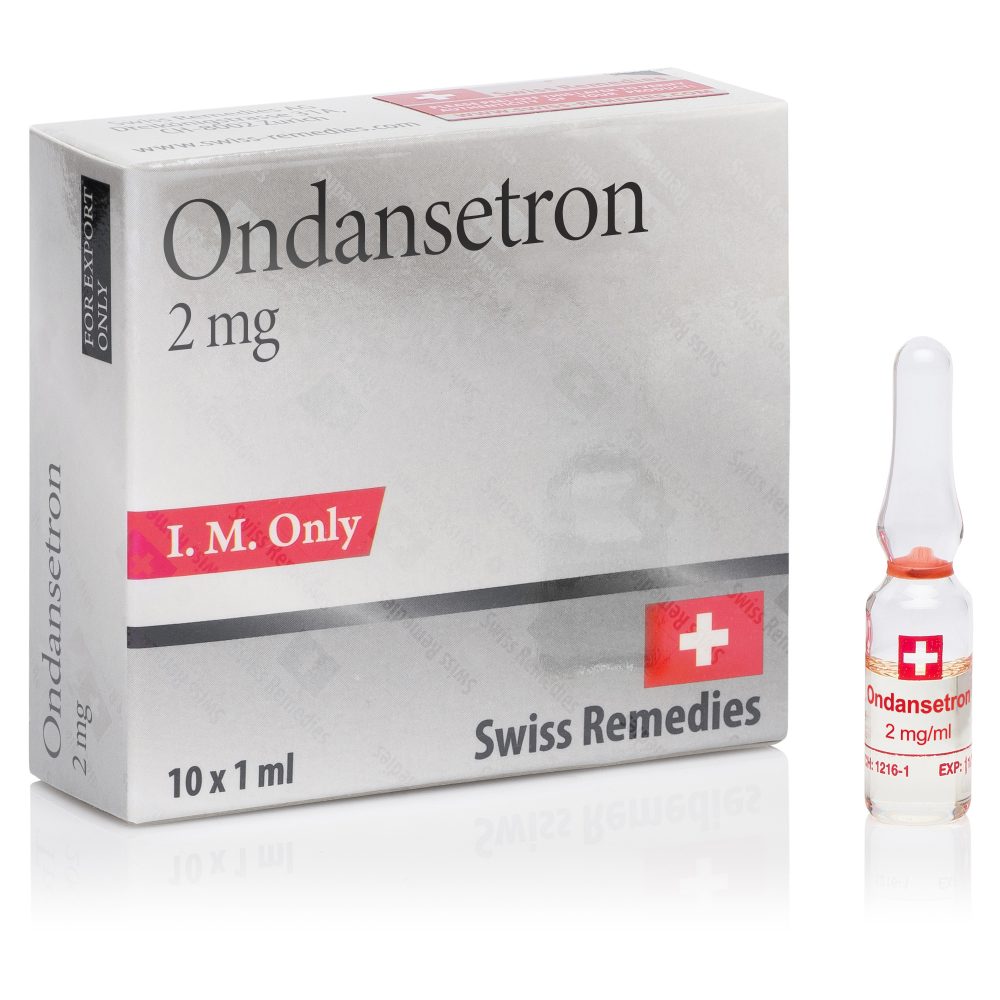Ondasetron
Contents: 2mg/ Ondasetron (injections)
Side effects: Headache, fever, lightheadedness, dizziness, drowsiness, tiredness, constipation, or redness/pain/burning at the injection site may occur. If these effects persist or worsen, notify your doctor promptly. Remember that your doctor has prescribed this medication because he or she has judged that the benefit to you is greater than the risk of side effects. Many people using this medication do not have serious side effects. Tell your doctor right away if you have any serious side effects, including: stomach pain, muscle stiffness/spasm, vision changes (e.g., temporary loss of vision, blurred vision, uncontrollable eye movements). Get medical help right away if any of these rare but very serious side effects occur: chest pain, slow/fast/irregular heartbeat, severe dizziness, fainting. This medication may increase serotonin and rarely cause a very serious condition called serotonin syndrome/toxicity. The risk increases if you are also taking other drugs that increase serotonin, so tell your doctor or pharmacist of all the drugs you take (see Drug Interactionssection). Get medical help right away if you develop some of the following symptoms: fast heartbeat, hallucinations, loss of coordination, severe dizziness, severe nausea/vomiting/diarrhea, twitching muscles, unexplained fever, unusual agitation/restlessness. A very serious allergic reaction to this drug is rare. However, get medical help right away if you notice any of the following symptoms of a serious allergic reaction: rash, itching/swelling (especially of the face/tongue/throat), severe dizziness, trouble breathing. This is not a complete list of possible side effects. If you notice other effects not listed above, contact your doctor or pharmacist.
Administration: To prevent nausea from chemotherapy, ondansetron is mixed in a solution and given by injection into a vein as directed by your doctor, usually over 15 minutes. This drug is usually started 30 minutes before your chemotherapy treatment begins. Do not give this medicationany faster than recommended or take more than the recommended dose because this may increase the chance of serious side effects such as blurred vision or slowed/irregular heartbeat. The usual maximum single dose is 16 milligrams. Older adults are usually prescribed a lower dose to decrease the risk of side effects. Depending on the type of chemotherapy treatment you are receiving, a second and third dose may be given 4 and 8 hours after your first dose. You may also be switched to a medication you can take by mouth. Your doctor may direct you to continue this medication for 1 or 2 days after your chemotherapy treatment. If you are using this medication on a prescribed schedule, use it regularly to get the most benefit from it. To help you remember, use it at the same times each day. Use this medication exactly as directed. Do not use more medication or use it more often than prescribed. Ask your doctor or pharmacist if you have questions. If you are giving this medication to yourself at home, learn all preparation and usage instructions from your health care professional. When the vial is stored upright after first use, clumps may occasionally form on the top of the vial. Check the vial and the vial top carefully for particles. If particles are present, shake the vial to re-dissolve the particles. If any particles remain after the vial is shaken, do not use the liquid. Ondansetron injection should be clear and colorless. If you are using the premixed bags, after removing the bag from the outer wrapper, check for small leaks by squeezing the container firmly. Before using, check visually for leaks, particles, or discoloration. If these are present or the container is damaged, do not use the liquid. Learn how to store and discard medical supplies safely. To prevent or treat nausea after surgery, a single dose of ondansetron may be given undiluted into a muscle or vein (IV) shortly before the start of surgery, during surgery, or after surgery by a health care professional. Dosage is based on your weight, medical condition, age and response to treatment. Tell your doctor if your condition does not improve or if it worsens.
Details: This medication is used alone or with other medications to prevent nausea and vomitingcaused by cancer chemotherapy. It is also used to prevent and treat nausea and vomiting after surgery. It works by blocking one of the body’s natural substances (serotonin) that causes vomiting.


